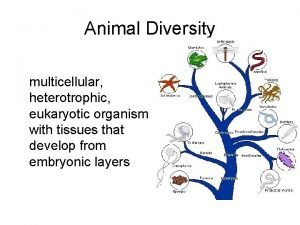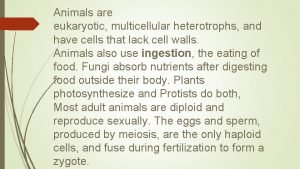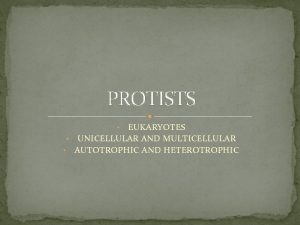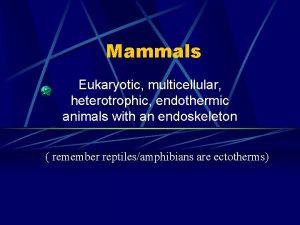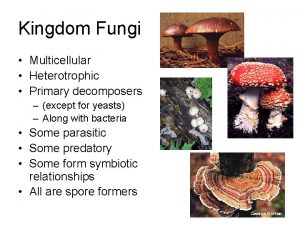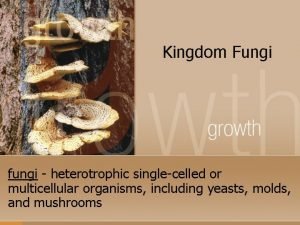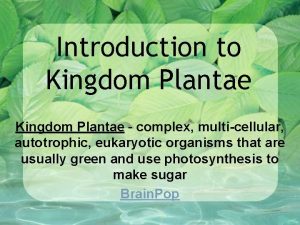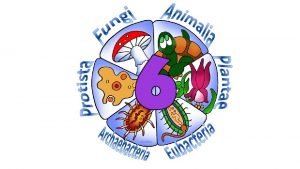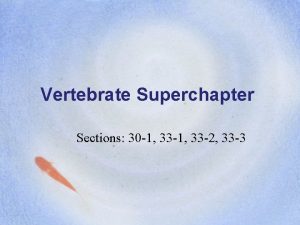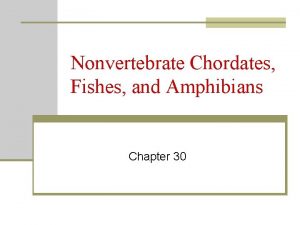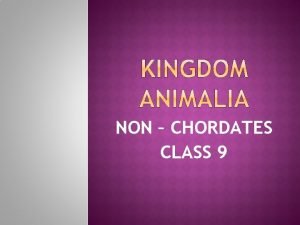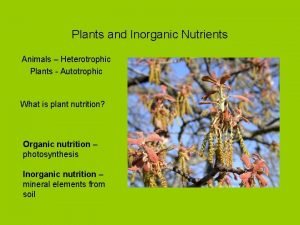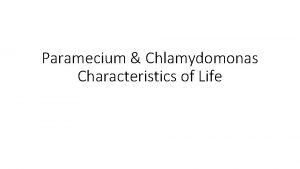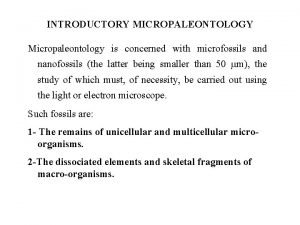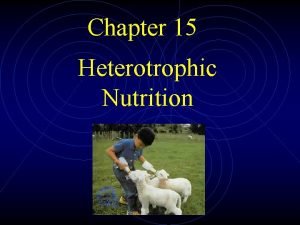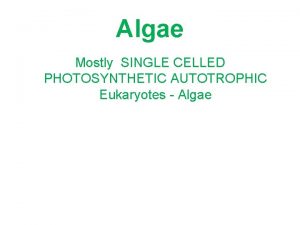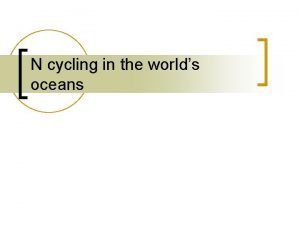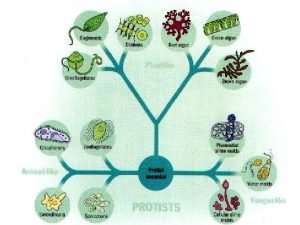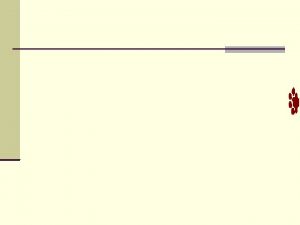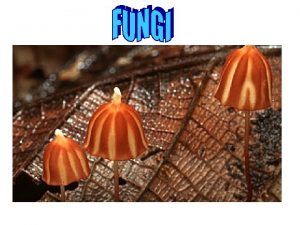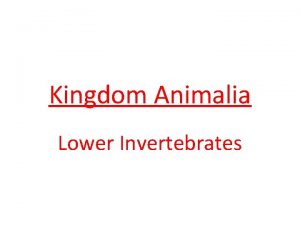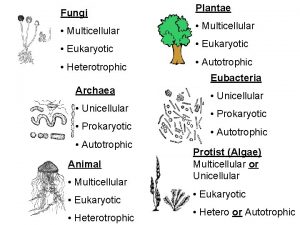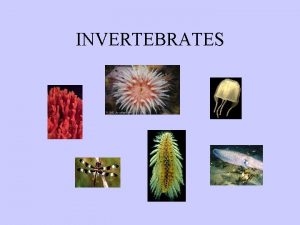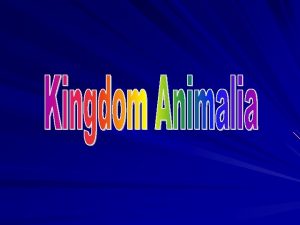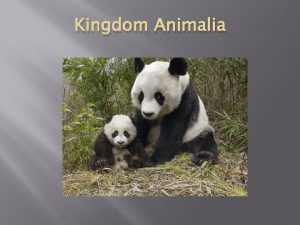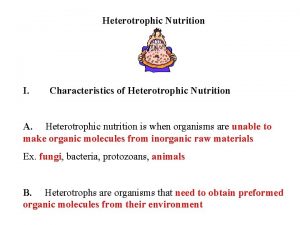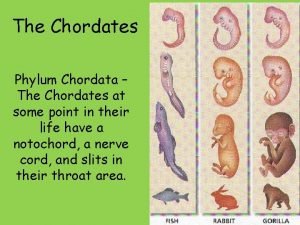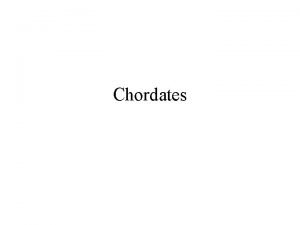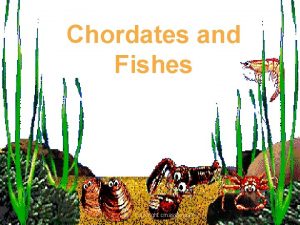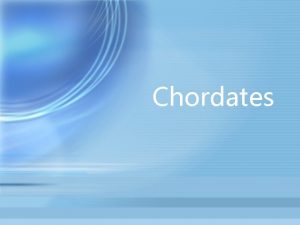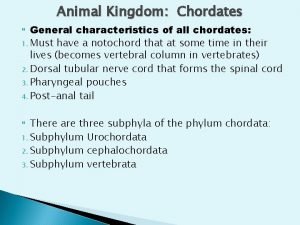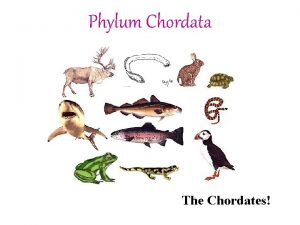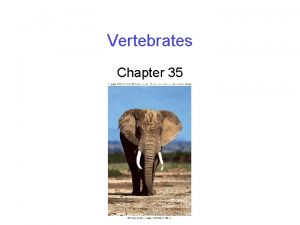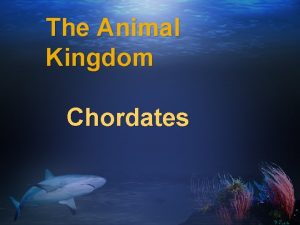NON CHORDATES CLASS 9 Eukaryotic Multicellular Heterotrophic No





















- Slides: 21

NON – CHORDATES CLASS 9

� Eukaryotic � Multicellular � Heterotrophic � No cell wall � Mostly mobile

� Non – chordates or invertebrates � Chordates or vertebrates

� Organisms with holes or pores all over the body. � Non motile animals – attached to some solid support. � Canal system of circulation because of pores for circulating water throughout the body to bring in food and oxygen. � Covered with hard outer or exoskeleton. � Minimal differentiation and division into tissues. � Marine habitats

sycon euplectela spongilla

� Live in water � More body design differentiation � Presence of a body cavity � 2 layers of body cells – a layer outside the body and the inner lining of cells. � Some species live in colonies like corals � Others are solitary like hydra.

hydra corals Sea anemone Jelly fish

� More complex design of body. � Bilateral symmetry of body – left and right halves of body have same design. � Triploblastic – 3 layers of cells from which tissues are differentiated. This allows inside and outside body linings and some organs to be made. � No coelom or internal body cavity. � Called flatworms - Dorsiventrally flattened body ( flattened from top to bottom) � Either free living (like Planaria) or parasitic (like liver fluke)

planaria Liverfluke tapeworm

� Bilaterally symmetrical � Triploblastic � Cylindrical body � Tissues present, no real organs � Pseudo coelom or a sort of body cavity is present. � Parasitic worms causing diseases. elephantiasis Worms in intestine Filarial worms Roundworm or pinworms

ascaris wuchereria

� Bilaterally symmetrical � Triploblastic � Have a true body cavity – true organs packaged inside the body – extensive organ differentiation. � Body has segments lined up from head to tail. � Habitats – freshwater, marine water, land

nereis earthworm leech

� Largest group of animals � Bilaterally symmetrical � Segmented body � Open circulatory system – blood does not flow in blood vessels, blood fills the coelomic cavity � Have jointed legs (arthro + poda)

Palamnaeus (scorpion) Palaemon (prawn) Aranea (spider) Pariplaneta (cockroach) Musca (housefly) Scolopendra (centipede) butterfly

� Bilateral symmetry � Coelomic cavity is reduced � Little segmentation � Open circulatory system � Have kidney like organs for excretion � Foot is used for moving around.

chiton pila Unio octopus

� In Greek, echinos means hedgehog, derma means skin. � Spiny skinned organisms. � Free living � Marine � Triploblastic � Have a coelomic cavity. � Tube system which is water driven for moving around. � Skeleton made by hard structures made of calcium carbonate.

Antedon (Feather star) Echinus (sea urchin) Holothuria (sea cucumber) Asterias (star fish)

� Bilaterally symmetrical � Triploblastic � Have a coelom � Have a notochord at some stages of their life � Notochord = long rod like structure that runs along the back of the animal separating the nervous tissue from the gut. � Provides a place for muscles to attach for movement. � Marine animals

Balanoglossus Amphioxus Herdmania
 Heterotrophic eukaryotic organisms
Heterotrophic eukaryotic organisms All animals are multicellular heterotrophic eukaryotes
All animals are multicellular heterotrophic eukaryotes Is protista autotrophic or heterotrophic
Is protista autotrophic or heterotrophic Multicellular heterotrophic
Multicellular heterotrophic Heterotrophic decomposers
Heterotrophic decomposers Are all fungi multicellular heterotrophs
Are all fungi multicellular heterotrophs A multicellular autotrophic organism with vascular tissue
A multicellular autotrophic organism with vascular tissue Prokaryotic unicellular
Prokaryotic unicellular Single loop circulatory system
Single loop circulatory system Frog digestive system
Frog digestive system Non chordate
Non chordate Chant des aventurier adventiste
Chant des aventurier adventiste Heterotrophic plants
Heterotrophic plants Is chlamydomonas a heterotroph or autotroph
Is chlamydomonas a heterotroph or autotroph Are protists eukaryotic
Are protists eukaryotic Deuteromycota
Deuteromycota Micropaleontology lecture notes
Micropaleontology lecture notes Flow of energy definition
Flow of energy definition Holozoic nutrition
Holozoic nutrition Is algae heterotrophic or autotrophic
Is algae heterotrophic or autotrophic Heterotrophic denitrification
Heterotrophic denitrification Heterotrophic eukaryotes
Heterotrophic eukaryotes
